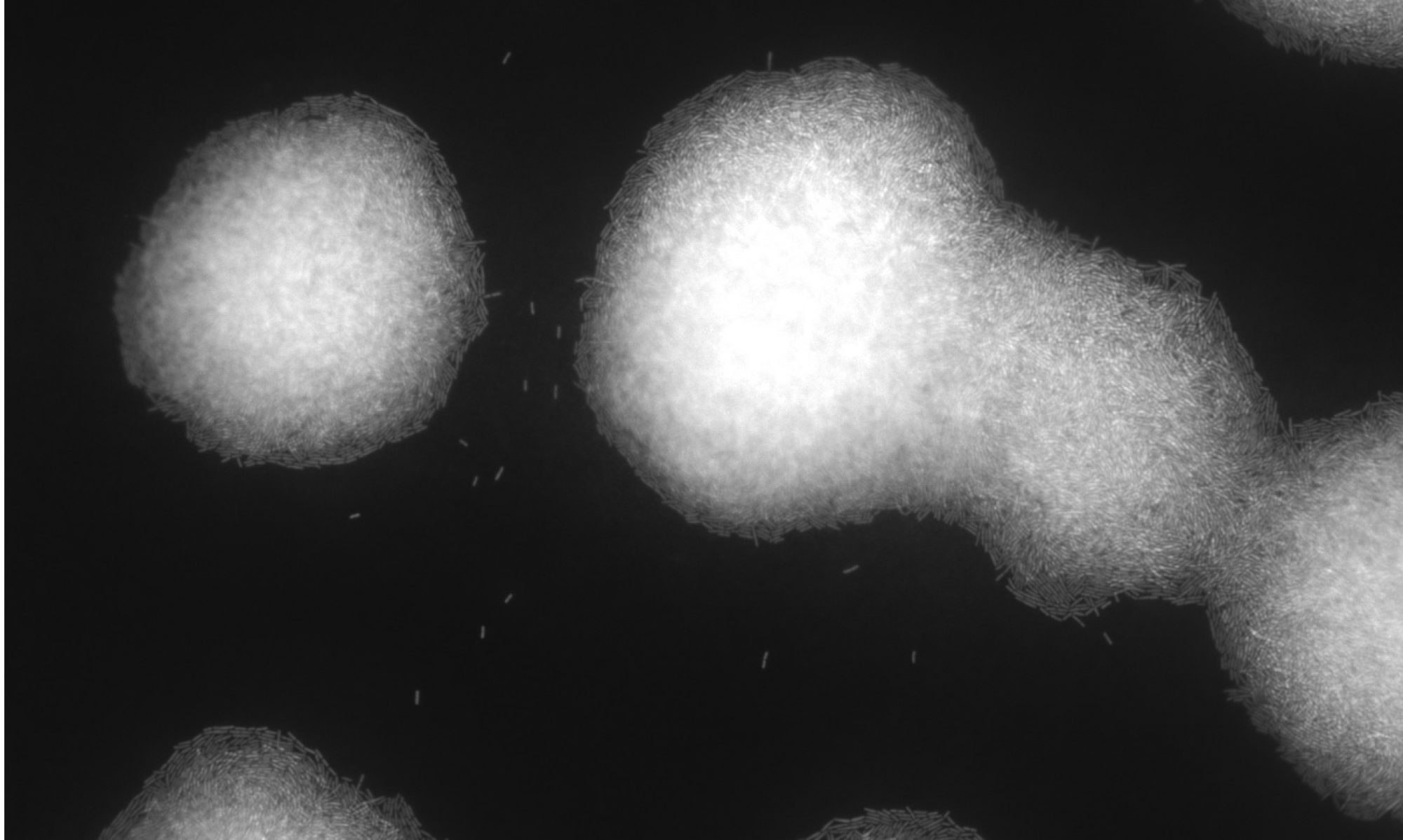In December I visited the long awaited Keystone symposium on the Role of the Genital Microbiome in Reproductive and Sexual Health. It was such an exciting and interesting conference and I learned a lot. Even in the airplane I spent the very last minutes of the flight talking about vaginal bacteria.
The strength of this symposium was the diversity. There were doctors and lab people, students and professors, there were Africans, Europeans, Americans and Asians. But most importantly, they came from different fields: HIV, preterm birth, etc. These people normally would not be at the same conference, they live parallel scientific lives publishing in their own journals and attending their own meetings. But the bacteria of the vagina bring them together. It has become crystal clear that the vaginal flora (or “microbiota”) have a very strong say in the various questions of these fields, such as who is prone to HIV infection (sexual health) and who is at high risk to deliver their baby too soon (reproductive health).
These people sat down in a big conference room together for four days, with in total 22 hours of presentations and about ten hours of more random wine-infused scientific chatter around 70 square feet of results printed on big poster boards.
The collective results were striking to say the least. One study that turned up in several presentations a group of 236 young South-African women were followed for about a year. Just as a reminder: in certain areas of Africa women start out with 0% HIV at 14 years old and in the following six years about 60% gets infected with HIV. In certain communities being seropositive is the norm. In this particular study, on the FRESH cohort in a township in Kwazulu Natal, a group of women were followed for about two years, 13% of all women got infected with HIV during this time period. But the risks of getting HIV-infected were not the same for all of them. The subgroup that had a vaginal flora mostly made up of a bacterium called Lactobacillus crispatus exactly 0 girls were infected. These bacteria seemed to almost behave like condoms (although please please still use condoms).
Find the paper here: https://linkinghub.elsevier.com/retrieve/pii/S1074-7613(16)30519-2
This same picture returned in literally every presentation that followed. Women with Lactobacillus species always have better health outcomes, and in most studies women with Lactobacillus crispatus do a bit better than Lactobacillus iners. The only exception I can think off is Candida infection that occurs regardless of the vaginal microbiome or in some studies a bit more often in women with vaginal lactobacilli.
Jeanne Marazzo, the opening speaker of the symposium, showed a picture of the vaginal lactobacilli a protective superpower. A dangerous watchdog that keeps out the bad guys. It was fascinating for me, yet again, to see this one Lactobacillus species beyond any doubt, in virtually every talk at the conference, in any cohort, be the good guy. I confirms that it is important and worthwhile to focus on these bacterial species because they mean so much for women’s health.
What happens if you don’t have these crispies (as I heard them refer to during the conference) or you lose them in the course of your life? Well, one of the most prevalent vaginal bacteria is a species called Lactobacillus iners (either pronounced like “ainers” pronounced like “I nurse” or “inners” like in “inner circle”). Clearly, this is the less preferred Lactobacillus. A bacterium with two faces: women that have this bacterium as their most abundant species seem less well protected and more likely to get infected or when pregnant deliver their babies too early. However, Lactobacillus iners is still preferred over having no Lactobacillus at all. You could see iners as just not a very good watchdog. Maybe he doesn’t bite? Or maybe he is secretly friendly with the bad guys? Or maybe he is just careless: leaving windows and doors open to let the bad guys in? All questions up for debate.
Douglas Kwon, who was the senior author on the previously mentioned study on HIV, showed data that sketch a rough storyline of vaginal microbiome. Most women start out with “crispies”, if they change to a different bacteria, it’s most often iners, and if they change from iners their more likely to switch to a flora that has very few lactobacilli but lots of other unwanted species such as Gardnerella, Prevotella and Megaspaera. These bacteria are not regarded as real bad guys (like Salmonella or Chlamydia) that will directly make you sick, although some believe they are. Clearly, you still really need to have unprotected sex with an infected partner before you get infected with Chlamydia or HIV.
Having no lactobacilli but these bacteria like Gardnerella is regarded as a “state” and referred to as “dysbiosis”. Although in many African groups it is more common than having Lactobacillus. Most women wouldn’t even notice that they don’t have good watchdogs around but some have symptoms like discharge and odor. For some it is so serious that it just outright destroys their sex lives, their relationships and their confidence. Even without preterm birth and HIV, this would already be a pretty good reason to study it and try to help these women out.
The immune response
One of the things that I learned more about during the conference is the role of the immune system. Without your lactobacilli, the immune system is more likely to be alarmed. It starts to get ready to attack and reacts as if its fighting off an infectious disease (we call this inflammation: redness, swelling, pain caused by your immune system responding to an infection). This is bad news if you have sex with a partner infected with HIV because HIV viruses infect exactly those cells (T-cells) that are involved in the immune response. So basically, you are calling the victims to the party.
When we talk about the immune system we distinguish between “pro-inflammatory” and “anti-inflammatory” signals: bacteria or chemicals that are the equivalent of someone yelling “fire fire!” to the immune system (pro-inflammatory), or sing a lullaby to the immune system (anti-inflammatory). Both may be going in in the vagina. Species like Gardnerella and Prevotella may already on their own may send alarming signals. And chemicals produced by Lactobacillus may be the equivalent of the lullaby: a comforting signal to the human body that “the good guys” are around.
When your pregnant the story may be a bit different. It could be that these bacteria alone may cause your water to break way too early and give your baby a troublesome start (or worse). One of the mechanisms through which this happens may be inflammation. Several stories in the symposium outline how Lactobacillus species will prevent an inflammation reaction whereas species like Gardnerella will provoke inflammation. Some of the pathways through which our bodies start such an inflammatory response are the same that the pregnant body uses to start labor.
Before I move on to my own research let’s just sit back and look at the weirdness of the vagina. How incredible it is that women really only just have two important watchdogs. In some groups you will find about 80% of women having one of these. This is found nowhere else in the human body and as Jeanne already pointed out: we really need to get rid of “diversity” as a characteristic of a healthy flora (or “microbiome”). In the vagina you want less species not more.
It was really great to meet so many of the heroes of the field. Everyone took a lot of time to answer all questions and everyone was very approachable.
Unfortunately, I cannot share many of the very interesting new aspects of the vaginal microbiome that were presented during the meeting, because a lot of the results are unpublished.
If you want to see the poster I presented, please find it here: https://figshare.com/articles/Lactobacillus_crispatus_growth_on_glycogen_is_dependent_on_its_type_1_pullulanase_gene_variant/7478330
I also gave a 10 minute oral presentation and I used my slides later for a lecture at ARTIS/Micropia. Find the presentation here: https://figshare.com/articles/Introduction_to_vaginal_microbiome_-_lecture/7583312
What’s next?
This year I am planning to make much more time for research. I want to further look at glycogen metabolism of vaginal bacteria and luckily I have met several people at the conference who are working on the same topic and are interested to work together.
The meeting really stresssed the importance of trespassing the boundaries of different fields. I really want to pull the human factor into the lab. Study the presence of glycogen levels and glycogen breakdown enzymes in vaginal swabs. Also, I will continue studying the type 1 pullulanase of L crispatus and regulation of this gene/enzyme. Having seen the talks in Cape Town I think that these basic mechanisms of vaginal metabolism need to be elucidated so we can move on. Deborah Jekel, a very motivated and talented bachelor student is starting this week to help me do just that.
Stay tuned!

